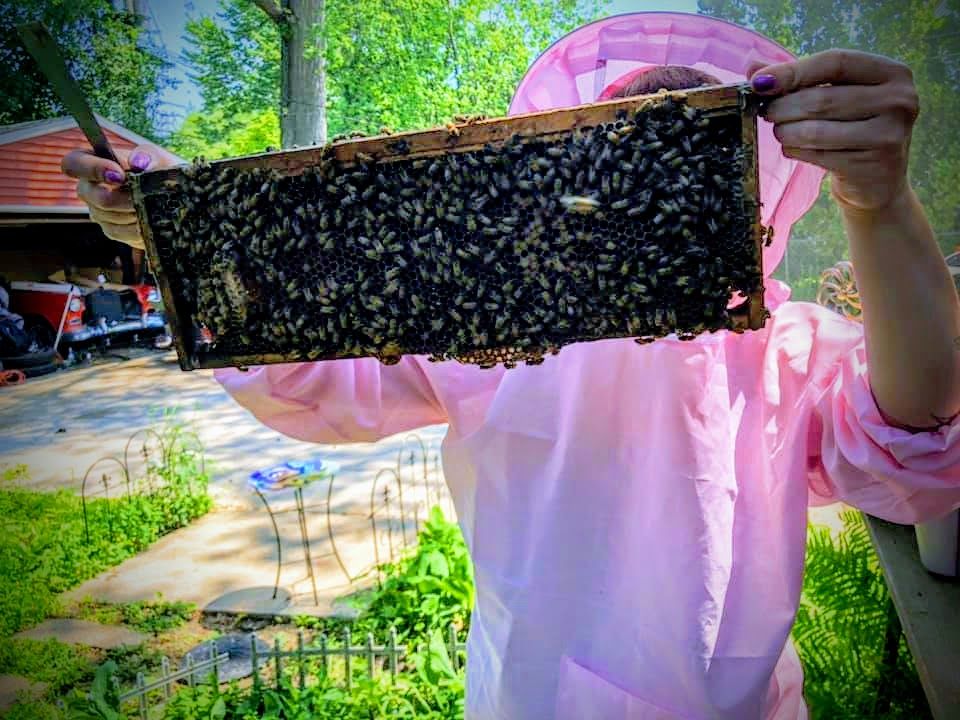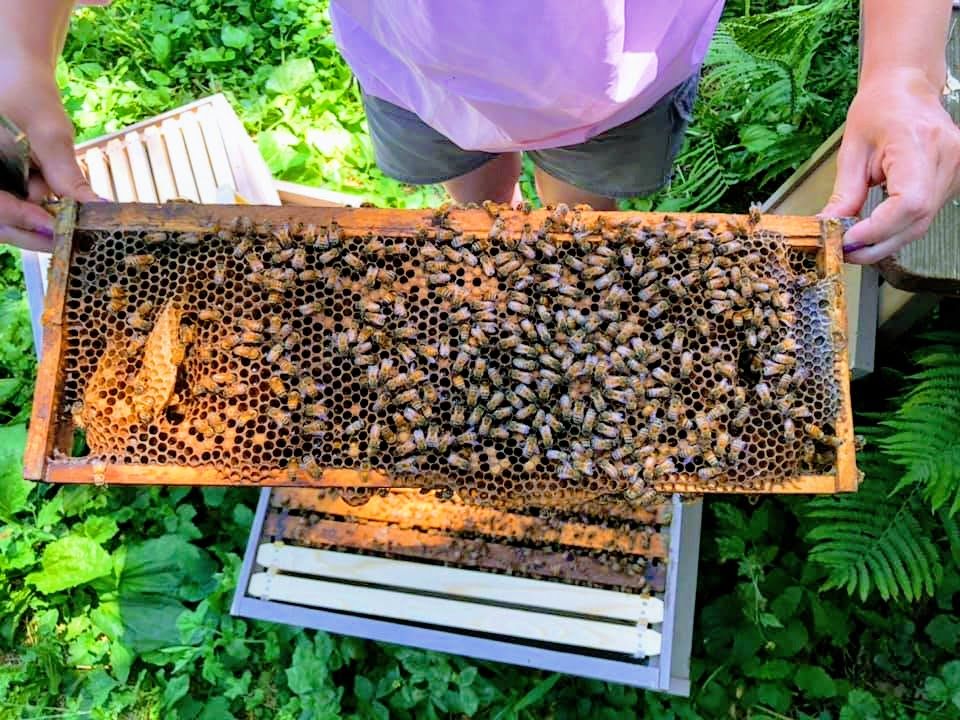Let me start by disclosing that I am originally from Ann Arbor and a dyed-in-the-wool tree hugger. I was attending Earth Day rallies on U of M’s Diag while most of my friends were at the mall. Environmental sustainability has always been a passion of mine and truly shapes the way I live. While attending those Earth Day rallies on the Diag in middle school, I also began to frequent thrift shops and resale shops. Not only were the clothes cooler and cheaper, I discovered they were survivors: made more carefully than “new” clothes and of materials that were intended to last. Despite being “used,” they were far from used up. To this day, the vast majority of my closet is vintage and/or used.
When I reached the age of accumulating furniture, I found the same principles held true. The new furniture that was in my price range from big box stores was essentially disposable, built for a short life before adjourning to the trash heap. But, the furniture I found at thrift stores and tag sales was sturdy and likely to stay with me for a while (provided it passed the smell test.) I can count the number of pieces of new furniture I’ve bought in my lifetime on one hand. Half of my living room furniture is currently being reupholstered because, though it is more than fifty years old, it is still sturdy and has served my family well. My kids are the fifth generation to use it and the fourth generation to call it theirs.
Home ownership brought new challenges to my way of life, as did introducing children and pets into the picture. I just couldn’t bear spraying the chemicals on my grass that would kill the beautiful dandelions and violets, much to the chagrin of neighbors who all had tidy and green, perfectly edged lawns. And, if those chemicals killed the flowers, what might they do to my dogs, kids and the urban wildlife that called my yard home? Spraying my lawn was a non-starter for me. I learned to create spray bottles of vinegar, dish soap and salt to manage the gratuitous weeds in an effort to placate my neighbors and watched joyfully as more and more native plants, insects and birds began calling my yard home.
About a decade ago, it occurred to me – my lawn wasn’t making anyone happy. It wasn’t tidy enough to please my neighbors (who by that time had learned to love me enough to live with my yard) and mowing down the beautiful flowers just to shorten the grass didn’t appeal to me. I began hatching a plan. I read up on native plants, pollinator gardens and local ordinances. I scouted out other yards that were a bit wild and some that had gone so far as to eliminate most or all of their grass; there were more of them than I previously realized. I discovered I was not alone in my thinking.
Then five years ago, I began my journey to the perfect yard in earnest. For Mothers Day, I asked my family to help me rip out half of the grass in the front yard; who can say “no” to mom on Mothers Day? We hoed and shoveled and carted away all of the grass from the house to midway down the yard. We amended the soil and planted some phlox, daisy, black-eyed susan and coneflower. A few neighbors scratched their heads, but many confided in me that they enjoyed my flowers.
The next Mothers Day, we removed the rest of the grass and planted butter cups, lavender, sweet william and columbine. The third year, I reassessed. Some of the things I planted worked; others didn’t. I spent a lot of time on my hands and knees, in the dirt, getting to know my mini-ecosystem intimately. I worked alongside ants, beetles, worms, butterflies, praying mantises and even bees. For the first time in my life, I realized how many different kinds of bees there were – five different species in my yard alone. And, I realized they didn’t bother me; we truly worked side by side. They went about their business and I about mine, leaving room for each other.
Over the next two years, I also made my backyard more pollinator friendly, eliminating most of the grass and adding native plants in its place. My family gradually grew comfortable with their new, more natural lifestyle; my partner even built a large, raised bed vegetable garden. When I broached the subject of becoming a beekeeper, he jumped on board without hesitation. He even surprised me with beekeeping equipment for Christmas, and in January I enrolled in a beekeeping course.
As the weather warmed, I began preparing for the arrival of the bees in earnest. Determining where to locate a hive on your property has a surprising number of factors. Ideally, it should be in a sunny – but not too sunny – location, plenty of morning sun preferred. It should be off the beaten path so the bees can go about their days without flying smack into dogs or their humans. And, when possible, away from the property line so as not to unnerve neighbors. I was fortunate to find the perfect spot which met all of those conditions, and, backed up to my Florida room, giving me the perfect vantage point from which to watch their comings and goings without disturbing them. Location, location, location! I assembled and painted my hive, along with a water garden nearby. (Fun fact: bees drink water too.)
When starting a new hive, a beekeeper has three options:
- catch a swarm (feral bees on the lookout for a new home)
-buy a package of bees (usually shipped from someplace warm)
- or buy a “nuc,” short for nucleus (a mini hive, complete with queen, drones, workers, and all the food a hive needs to get a good start.)
I opted to buy a nuc from a local beekeeper. After waiting what seemed like forever, my bees arrived on a sunny spring day. My mentor brought my nuc over over in a transport box, then walked me through the process of moving them into my hive. One by one, I lifted each frame slowly and carefully from the transport box, looking for signs of hive health: eggs, larvae, drones, workers – and a strong, healthy queen. On the very first frame, I spotted all five. The remaining frames also revealed signs of a good, strong community of bees: plenty of resources and calm (yet busy) bees.
Over the next several weeks, I watched as the scouts left their new home looking for the best places to gather nectar and pollen. I observed as the workers landed on our flowers and drank from their water garden.
I couldn’t help but marvel as the community grew and thrived, humbled to have a front-row seat to the wonders of our natural world, my little oasis in the suburbs.


Comments
Sign in or become a Nu?Detroit member to join the conversation.
Just enter your email below to get a log in link.